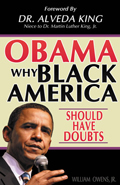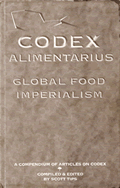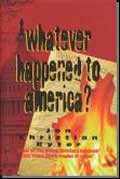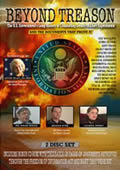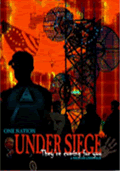MEDICAL JOURNALS PIMP FOR BIG PHARMA
By
Jon Christian Ryter
June 19, 2010
NewsWithViews.com
PLoS Medicine a peer review journal for the Public Library of Science claimed in an article that the most respected medical journals have become much too dependent on revenue from the pharmaceutical industry from two sources. First, advertising revenue which, according to PLoS, is the least corrupting form of revenue since the pharmaceutical industry should have the right to reach their potential customers in the periodicals their customers—doctors—read. What is the bigger problem, and what corrupts the integrity of the advertising process in about 25 different medical journals according to PLoS in an article published by the Public Library of Science five years ago (but never read by the general public which does not generally subscribe to it) is the second source of "advertising" revenue. The PR firms hired by the pharmaceutical giants pay fees to the journals to print well-edited capsulated synopsis of the drug trials.
The PR firms know that when the drug trials are published in any medical journal, the drug and the test tacitly carry that journal's stamp of approval simply by appearing in it. According to PLoS, a favorable review in a periodical like the Journal of American Medicine and the British Medical Journal and Lancet which have global distribution is worth thousands of pages of advertising. The PR companies will sometimes pay upwards of a million dollars for reprints of the articles to send to drug distributors, pharmaceutical wholesalers and medical professionals. While the PR firms admit the recipients of the reprints seldom read them, what they rely on is the name of the prestigious journal printing the review of giving a new drug credibility in the marketplace it has not earned from evidence of their curative abilities. The more important the medical journal, the more credibility the drug receives in the eyes of the physicians who receive the reprints.
Many times the whole content of the written clinical tests are not all that favorable to the drug but that, of course, is not reflected in the capsulated, controlled synopsis that appears in the medical journals. In 1994, Dr. Paula Rochon, adjunct scientist for the Kunin-Lunefeld Applied Research Unit and several of her colleagues wrote a paper examining the impact of journals which were paid to publish controlled excerpts of clinical studies had on the medical community's acceptance of the drugs compared to actual medicinal value of the drugs examined. The study focused on one class of drugs only: nonsteroidal anti-inflammatory drugs designed to combat arthritis. They found 56 trials. Not one of the published reports on the clinical studies presented any facts that were detrimental to the drugs tested.
The group came back a decade later, in 2003, and did a follow-up study on the 56 trial drugs to see if the drugs were living up to their clinical claims. The article was published by Richard Smith, the CEO of UnitedHealth Europe. Smith was Editor-in-Chief of the British Medical Journal for 13 years and held that job when the aforementioned study on the new arthritis drug was done. In many cases the reality of the drugs did not match the printed rhetoric of the promises of the clinical study conducted a decade earlier.
The
question raised by the Public Library of Science a decade later
was: how do pharmaceutical companies get the results they want once
the drug is approved and recommended by physicians to their clients.
When we go to our HMO or PPO physicians and they prescribe medication,
we assume—and have every right and expectation to assume—that
the prescription our physician prescribes will relieve or cure whatever
the prescription is taken for. According to Smith, the pharmaceutical
companies and their PR firms get the results they want not by fudging
the facts but by asking the right questions and providing the right
answers. This comes from hiring the right PR top guns who know how to
stay a step ahead of the peer review groups. They do this by isolating
positive parts of the clinical studies and forcing the dialogue into
those positive aspects while ignoring  negative
ones. Or they combine the results from different centers in multiple
combinations to obfuscate negative results in some facet or facets of
the clinical study.
negative
ones. Or they combine the results from different centers in multiple
combinations to obfuscate negative results in some facet or facets of
the clinical study.
These strategies, Smith noted, have been exposed in the cases of risperidone and odansetron. However, with the 56 clinical studies the PLoS were attempting to evaluate, there was an impossible amount of work to examine in order to ascertain how many of the trials were truly independent and not biased on behalf of the fees paid by the pharmaceutical company. Clearly, what the Big Pharma wants is their drugs approved and used, and the PR firms they hire are paid to get positive "reviews" from the medical journals and paid advertising and advertorial (paid editorial copy) in the form of capsulated clinical studies.
What it comes down to, if the world's most prestigious medical journals—which medical professionals read as the Bible of the industry—have sold their souls for money, it is no more factually believable than magazines like The Onion or Mad magazine, the satirical comic book most Americans of read as teenagers back in the 1950s and 1960s. Smith further noted that "...Journal editors are becoming increasingly aware of how they are being manipulated and are fighting back. But, I must confess it took me almost a quarter of a century editing for the BMJ to wake up to what was happening...[E]ditors ask for other related data [related to] the studies submitted to them...But editors do not know what other unpublished studies exist."
Editors generally do not know if they are doing an honest peer review on one product or on a gigantic clever marketing jigsaw. More than likely one or more editors have commented that the material they get, regardless if it's a precise document or a jigsaw puzzle will always be of high technical quality.
The question raised by Smith and investigators like Dr. Rochon is how do we prevent the most prestigious medical journals in the world from selling their editorial souls for money? How do we prevent them from becoming no more credible than Mad Magazine or The Onion? How do we prevent them from becoming an extension of the marketing arm of the pharmaceutical industry? Smith thinks the editors can demand the right to review the protocols, and insist that all trials be registered; and most of all, demand that all clinical studies are completely transparent.
That won't happen because the journal publishers and shareholders know those clinical studies are worth millions of dollars in revenue, and bring additional millions in print advertising dollars from the pharmaceutical industry to reward them for publishing the clinical studies. Meaning, of course, that the medical journals are not going to risk that revenue. So, if you're a doctor who generally reads the New England Journal of Medicine, the Annals of Internal Medicine, JAMA or BMJ or Lancet in England, Canada or Australia for the latest life saving drugs, you might as well read something that will give you a chuckle.
| Subscribe to the NewsWithViews Daily News Alerts! |
Mad magazine was my magazine of choice as a kid. Give it a try. You have to say one thing about Mad. If you're older than 8 or 10 years of age, you'll always know when Mad's story line is an out-and-out lie or is coloring the truth. According to Smith and the editors of several other medical journals, you can't tell that from clinical studies published in the medical journals until you read the histories of the drugs about a decade later. By then, for some, it's too late. I guess that's why class action lawsuits are still in vogue.




